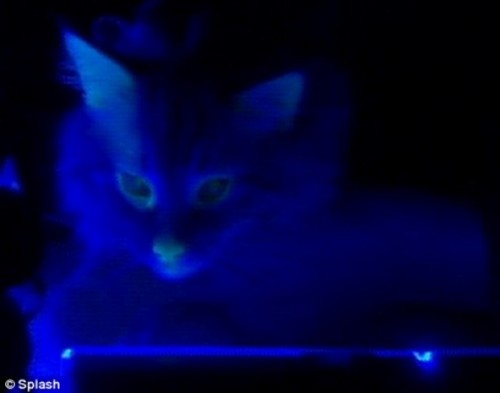le premier chat fluo suite à une modification génétique
Créé par des chercheurs travaillant sur un remède contre la mucoviscidose, ce chat surprenant a été génétiquement modifié. Son génome comprend désormais le gène de la GFP (Green fluorescent protein), qui lui confère la propriété étonnante de "briller" dans le noir, sous la lumière UV.
The green fluorescent protein (GFP) is composed of 238 amino acids (26.9 kDa), originally isolated from the jellyfish Aequorea victoria that fluoresces green when exposed to blue light. The GFP from A. victoria has a major excitation peak at a wavelength of 395 nm and a minor one at 475 nm. Its emission peak is at 509 nm which is in the lower green portion of the visible spectrum. The GFP from the sea pansy (Renilla reniformis) has a single major excitation peak at 498 nm. In cell and molecular biology, the GFP gene is frequently used as a reporter of expression. In modified forms it has been used to make biosensors, and many animals have been created that express GFP as a proof-of-concept that a gene can be expressed throughout a given organism. The GFP gene can be introduced into organisms and maintained in their genome through breeding, or local injection with a viral vector which can be used to introduce the gene. To date, many bacteria, yeast and other fungal cells, plant, fly, and mammalian cells, including human, have been created using GFP as a marker. Martin Chalfie, Osamu Shimomura and Roger Y. Tsien will be awarded the 2008 Nobel Prize in Chemistry on 10 December 2008 for their discovery and development of the gree. (source wikipidia)
